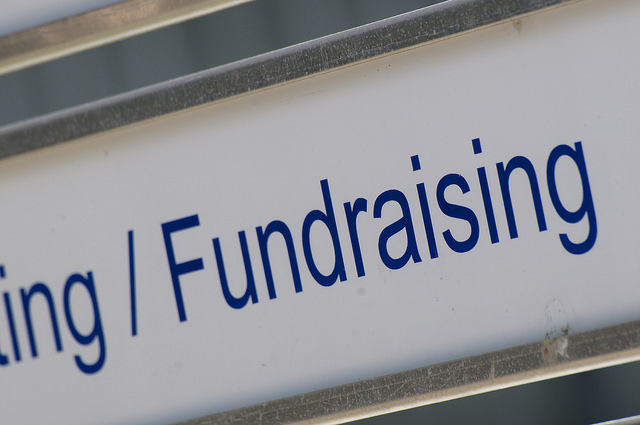Guest post by Alex Tsatsoulis – Alex is a professional fundraiser based in Minneapolis with a passion for helping nonprofits grow their capacity to achieve their missions. Follow him on twitter: @BikeAlex
**This outline of some basic approaches to building relationships that last with donors is specifically targeted to small nonprofits, or one-person development shops, that are just starting to get their individual donor programs off the ground. This is meant as a very basic guideline; you should always tailor your approach to your organization and your donors.**
In 2011, Individuals gave nearly $218 billion to nonprofits. That’s 73% of total U.S. giving for the year – far more than foundations or corporations received. Nonprofits must build and sustain strong relationships with people to stay in business – so how do we do that?
Individual donor fundraising is a difficult and time-consuming approach to fundraising, but this approach offers the best long-term reward, and is the best prospect for a steady stream of income. For a nonprofit used to sending out mail appeals or doing grant requests, it can be hard to add individual donor fundraising to your schedule, but it’s not impossible – and your individual donors are probably already waiting right under your nose!
Who are my donors?
The most common question when starting to think about an individual donor program is, “Where do I find major donors?” Odds are, you have a deep bench of small donors, but only a small handful of donors who give at a substantial level on a regular basis. So where do you find your major donors? Easy – in your database!
The people who are most likely to give big to your organization are the ones who are impacted by and engaged in your mission already. Some may already be taking action with your organization on some level, but haven’t been approached for a gift yet, or are only giving on a lower level. Your membership, your activist base, and your current donors – these groups are all already interested in and receptive to your mission and message.
You’ll need to devote some time to doing some basic research on the names already in your database. Depending on the size of your lists, this can be a daunting task. Prioritize current donors into those who already give at a higher level than average, then mid-level donors, then your volunteers/members who weren’t covered in the first two groups.
How do I research donors?
When researching donors, here are a few easy places to start:
- Begin by pulling together a list of possible prospects. If your list of donors is large, you can slim it down by focusing on donors who have either given consistently for a few years, have been active participants in your events or actions, or who have given gifts higher than the general average for donors to your organization in response to an appeal. If you have more advanced analytics on your emails, you may be able to find members who are consistently clicking through on your emails or sharing your content with their circle of contacts. They may be good prospective donors who just haven’t been approached for an ask in the right way yet.
- With your prospect list ready, do a simple Google search to see if there’s any readily available info on your donor. Do they give regularly to other causes or foundations? (Tip: check annual reports.) Can you find a common interest in their donation history? This can give you a good overall picture of someone’s giving interests and history.
- Go a bit deeper: check places like LinkedIn to learn more about their volunteering and employment. This can help you learn more about who they are. Check social media too – Facebook, Twitter, etc. This can give you a good idea of their interests as well.
- Estimate who has the ability to give a larger gift. You can pay to have a wealth screening performed on your donor and member list, in which an outside firm gathers the research for you from public information. This can be fairly expensive, but can be an efficient way to have some basic info on your donors’ capacity for giving and average gift size. Some of this can be done on the cheap too – use sites like zillow.com to check home values for your donors to see what their capacity might be.
These techniques will give you a basic picture of who your donors are, and what their interests are. It will also help you screen some of your donors who may be giving you $25 a year but have considerably more capacity and a history of supporting groups like yours. If you’re new to prospect research and feel uncomfortable looking up your donors, just remember that it’s public information; you are just trying to paint a picture of how the donor would like to be more engaged with your organization; and you will be treating your findings with confidentiality and integrity. Read more about guidelines for ethical prospect research at the Association of Prospect Researchers for Advancement (APRA)’s website.
So, you’ve got a list of prospective major donors – now what? Find out in Part 2!
Questions for Alex? Leave them in the comments!


 thedatabank, gbc is technology for change, and we walk the talk.
thedatabank, gbc is technology for change, and we walk the talk. 

